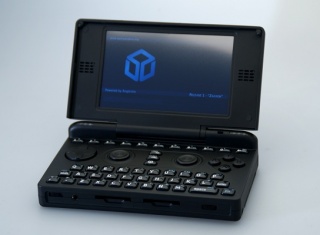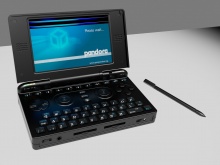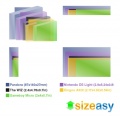Pandora
|
This wiki is an unofficial community project. Open Pandora Ltd. is not responsible for its content, and it should therefore not be treated as an official source of information about your device. The information contained in this wiki may be incorrect and/or out-of-date. |
|
Have some expertise, or just some spare time? Get involved! |
Contents
The Pandora is a combination of a seventh-generation handheld game console and miniature computer. It is the spiritual successor to other open handheld consoles such as the GP32 and GP2X. The device is open, meaning you can use it however you like and there are no restrictions or fees placed on developers, so anyone can write and release software for it. It runs a custom distribution of Linux based on Ångström and is currently the most powerful handheld gaming console available.
Availability
You can pre-order a Pandora from one of the links on the Pandora [Website].
Capabilities
The Pandora is a unique device. Currently, there is no other device available that has dedicated gaming controls (including two analog nubs) and a QWERTY keyboard. It was developed primarily as a game console, specifically, a device to emulate older systems (see Emulator list) and run native games (see Games). It can also be used as a handheld computer. You can use it to do many of the tasks you would on any other computer, such as browsing the Internet (with a full-featured web browser), listening to music, watching movies and shows, using instant messaging applications, etc. (see Software projects)
There are also a few things it can't do. Specifically, it can't run software that is only available for Windows, though if the source code is available there is a possibility it could be ported to run on the Pandora. Also, most proprietary Linux applications won't run without a port (as they were made to run on the x86 architecture while the Pandora is ARM-based).
Specifications
Core Hardware
Note: With the new production line in Germany, 256MB RAM modules have become unavailable in the recent time frame. All new Pandoras being/have been produced contain now contain a 512MB RAM module.
- Texas Instruments OMAP3530 system-on-chip (SoC): [1] [2] Specifications can be found at this link: [3]
- PowerVR SGX GPU (OpenGL ES 2.0, several million polygons per second). OpenGL ES demonstrated: [4]
- 256MB (Ciruitco model) or 512MB (Germany Model) DDR SDRAM in consumer units (early developer units had 128MB).
- Real-time clock (RTC) built in, to keep track of time: [5]
- 512MB internal flash memory (NAND) for consumer Pandoras (early developer boards had 256MB).
- Is "unbrickable", thanks to a ROM bootloader.
- Dimensions: 140 x 83 x 27 mm (See Size Comparisons).
- Mass: 320g [6] (0.739 lbs).
Display
- 4.3-inch (93.6 x 56.2 mm), 800x480 widescreen (5:3), touchscreen TFT-LCD. [7]
- Brightness: 300 cd/m2, Contrast ratio: 450:1, Response time: tr+tf=30ms. [8]
- TV-out included in hardware, A/V-OUT Port (similar in appearance to a large USB OTG port) has Composite and S-Video outputs and 3.5mm headphone output and microphone input.
- Separate TV-out signals, picture-in-picture capabilities. [9]
- Powerful 2D and 3D hardware acceleration, see above. [10]
Sound
- Has a high-quality audio DAC and an ADC.
- A pair of stereo speakers are built into the sides of the display.
- Volume Control Wheel.
- Built-in microphone. [11]
Input
- Buttons, keyboard, microphone, and touchscreen. [12]
- Two real, custom-designed, plastic analog nubs.
- QWERTY keyboard (cellphone-like, but larger). [14]
Connectivity
- 802.11b/g (Wi-Fi) included.
- RS-232 included, but a level converter is needed for the UART. [17]
- Two SDIO-capable SDHC/SDXC slots.
Power
- Lithium-polymer battery, ~4000mAh.
- Up to 10-14 hours battery life under reasonable load, 8.5 hours under max CPU load, ~17 hours playing music with the display off (source) (up to 100 hours claimed to be possible with further optimization [18])
- Can charge through an AC adapter or USB. [19]
- Advanced power management capabilities: only need to set a max clock speed; when the CPU is not doing anything it automatically HALTs and does nothing to save power. [20]
- Suspend to RAM or suspend to disk functionality is being developed. This will give longer battery life and faster start up. See Power modes.




